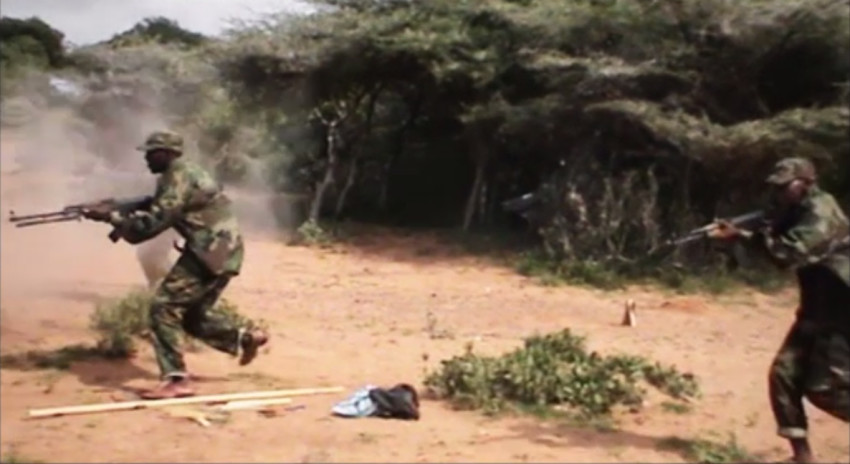 Shabaab fighters train for a suicide assault. Image from a Shabaab video released in January 2015.
Shabaab fighters train for a suicide assault. Image from a Shabaab video released in January 2015.
A heavily armed group of fighters from al Qaeda’s branch in East Africa stormed a hotel and seized control of it in the Somali capital of Mogadishu today. The attack is the latest by Shabaab against high-profile and relatively secure targets in the city.
The Shabaab assault team opened the attack by detonating a vehicle packed with explosives at the gate to the hotel. A small team of fighters then entered the hotel, took control of the building, and positioned themselves to repel an assault by Somali forces.
“The hotel is now fully under the control of the militants,” a police major told Reuters. “Al Shabaab fighters are on the top of the building and inside the hotel. It is not easy for us to go in.”
At least seven people were killed during the initial phase of the assault. An unknown number of government officials are trapped inside the hotel.
The suicide assault, or coordinated attack using one or more suicide bombers and an assault team, is a tactic frequently used by al Qaeda and its branches as well as allied groups such as the Afghan Taliban, the Movement of the Taliban in Pakistan, Lashkar-e-Taiba, and the Islamic Movement of Uzbekistan, and by the rival Islamic State. Suicide assaults are commonly executed by jihadist groups in Iraq, Syria, Yemen, Afghanistan, Pakistan, Somalia, and Nigeria.
Shabaab is adept at striking in high-security areas
Shabaab routinely targets hotels in the Somali capital as these are often meeting places for government officials and foreigners. The last such attack took place on Feb. 20, when a suicide assault team hit the Central Hotel, a gathering place for Somali parliamentarians and members of government. Several senior Somali politicians were killed.
In a previous attack, on Jan. 22, Shabaab claimed credit for the bombing at the SYL Hotel in Mogadishu that killed three people. The attack took place as Turkish President Recep Tayyip Erdogan and a delegation were at the hotel.
In the past, Shabaab has shown it can penetrate security at the heavily protected areas in the capital and carry out deadly attacks. The African Union Mission in Somalia (AMISOM), Somali government and military officials, and nongovernmental organizations have been the target of Shabaab suicide assaults and bombings. Last year, Shabaab attacked the parliament, the president’s compound, and a high security intelligence headquarters. In June 2013, a Shabaab team struck at the United Nations Development Program (UNDP) compound in Mogadishu; several UNDP employees were killed and Shabaab briefly took over the compound. And in September of 2012, three suicide bombers attacked Somalia’s president and Kenya’s foreign minister as they were speaking at a hotel in Mogadishu.
Today’s assault in Mogadishu serves as a reminder that the group is far from defeated, despite claims to the contrary by some in the Somali government. While the current media focus is on the Islamic State’s spectacular gains in both Iraq and Syria, Shabaab and its predecessor, the Islamic Courts Union, have controlled extensive areas of Somalia, including major cities, several times since 2006. Even today, Shabaab controls large portions of the countryside in southern and central Somalia, and still runs some towns and cities. An African Union offensive by forces from Uganda, Burundi, Ethiopia, and Kenya has managed to drive Shabaab from the major cities of Mogadishu and Kismayo, but three years after the start of the offensive, Shabaab still controls vast areas in Somalia.







